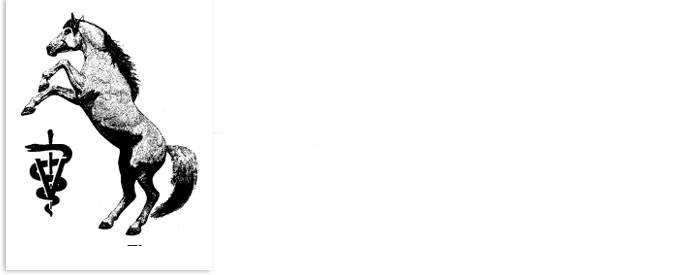Pigeon Fever is Back This Fall
Pigeon Fever, the disease that causes swollen chests and pus filled abscesses is prominent this fall throughout the bay area.
New Information about the Snotty Nose – Respiratory Infections in Horses
A snotty nose, a cough, a fever and poor appetite all signs that your horse is developing a respiratory infection. It can derail your pleasure riding, training and competition, or travel plans with your horse.
Vaccine Recommendations for Your Horse
Vaccination recommendations include Encephalitis, Tetanus, Strangles, Rabies, Botulism, Equine Viral Arteritis, Potomac Horse Fever, Influenza, Rhinopneumonitis and West Nile Virus.
De-Worming Your Horse
he leading cause of premature death in horses is colic. The leading cause of colic is parasites. All horses are regularly infected with parasites. Colic is a broad term for abdominal pain that can range from a little gas to full blown twisted intestine.
Navicular Disease New Treatments
Navicular disease is a disease of the hoof where pain originates in the navicular bone, a small bone just behind the coffin bone.
When Back Pain is not Back Pain
Frequently, I am asked to examine a horse for back pain. Although the pain along the back is real, the problem often lies further down on the horse. Usually it stems from a chronic hind leg lameness.
Foot Abscesses - Diagnosis and Treatment
With wet weather, horses are standing in mud. This softens the sole of the hoof causing tiny cracks, especially at the white line (the junction of the sole and the hoof wall). Dirt then works its way up under the sole where bacteria flourish.
Hock Lameness - Bone Spavin
Frequently, I am asked to examine a horse for back pain. Although the pain along the back is real, the problem often lies further down on the horse. Usually it stems from a chronic hind leg lameness.
Which Leg is Lame? - The Forelimb
Lameness in horses is one of the primary reasons for calling out your veterinarian. It causes wastage of young athletes and forces the ultimate retirement of older horses. Most horse owner know when their horse is lame. However, few are sure which leg is the lame leg.
Determining Hind Leg Lameness
Determining hind leg lameness can be a challenge. If you have problems picking out which leg is lame, you are not alone.
Stifle Lameness - Upward Fixation of the Patella
Stifle lameness generally falls into one of two diagnostic choices the first is that of permanent or intermittent upward fixation of the patella.
Understanding and Treating Navicular Disease
The first and most important point of this entire article is that Navicular Disease is NOT TERMINAL. With treatment and care the large majority of horses that have a diagnosis of navicular disease can be managed and returned to their previous level of performance.
What is a Pre-Purchase Examination?
A pre-purchase exam is a complete physical and lameness evaluation performed by a veterinarian for a potential buyer of a horse. The purpose is to determine what if any health or lameness problems the horse has today and what problems it may develop in the future.
Tying-Up - Understanding Tying-Up Syndrome
Tying-up is a laymen's term for the condition known as Exertional Rhabdomyolisis. In this condition there is massive contraction of the muscle groups along the back and rump of the horse.
The Heat or Estrus Cycle in the Mare
As breeding season approaches, it is important to understand the heat or estrus cycle in order to maximize the chances of success when breeding your mare.
Breeding Your Mare Using Shipped Semen
Shipped semen is one of the fastest growing ways to breed your mare. The process involves collecting a stallion, shipping the semen from the stallion to the location of your mare, and having the mare inseminated.
Choosing A Breeding Method
All horse people are overjoyed when they successfully breed their mare. The sight of a foal running and playing in the field is second to none. Getting to that picture requires knowledge and planning.
Understanding Pigeon Fever
Pigeon Fever is a disease that seems to be unique to California and Texas. This disease causes abscesses to form. The bacteria involved is called Corynebacteria Pseudo tuberculosis. There are two reasons that it goes by the name Pigeon Fever.
West Nile Virus Has Reached California
West Nile Virus is a viral brain infection that came to the United States in 1999. It causes severe neurological symptoms and kills over 30% of horses that contract it.
What Do Horses See?
Vision is a complex process that involves not only the eye focusing and detecting light that may vary in intensity, but also the brain interpreting what the eye is sensing.

